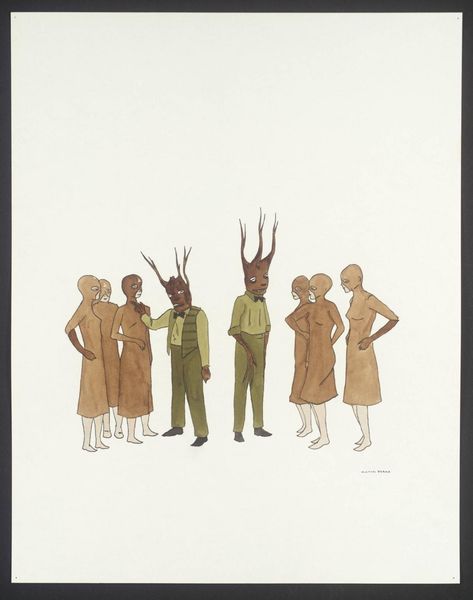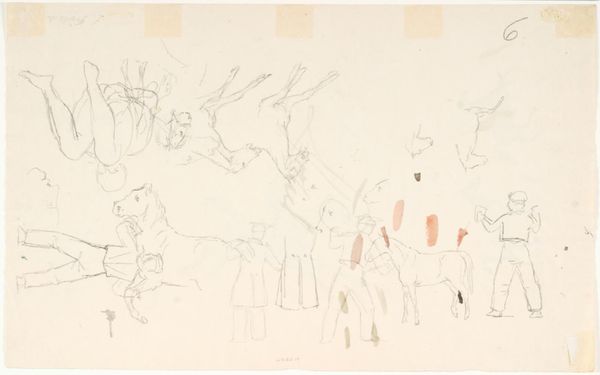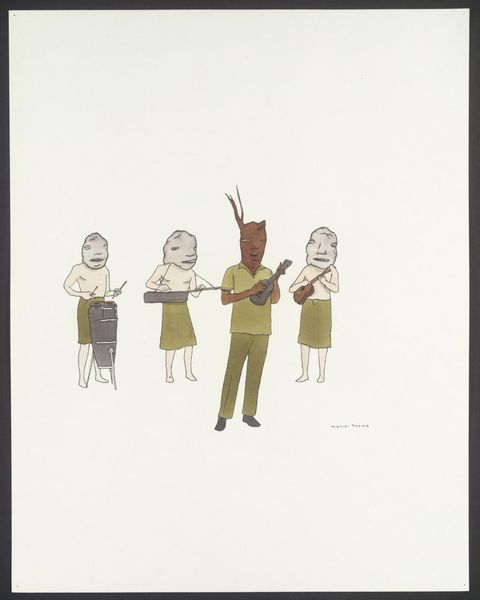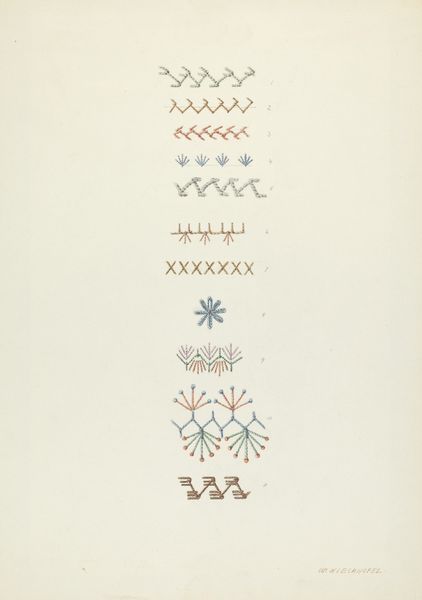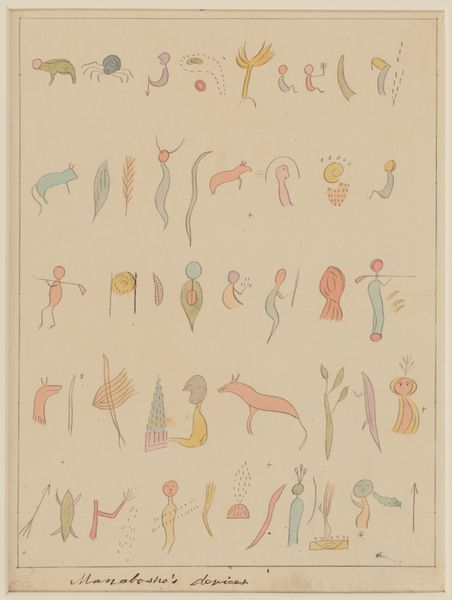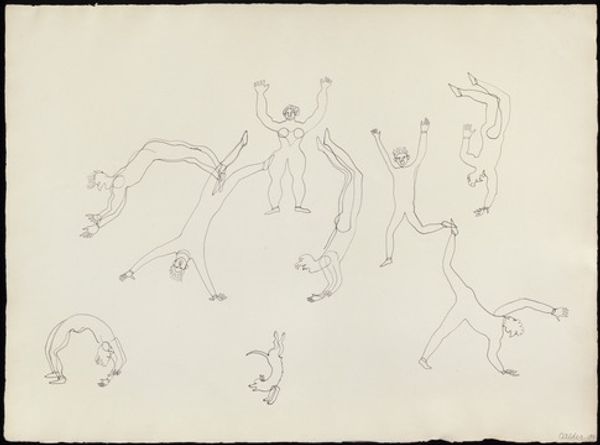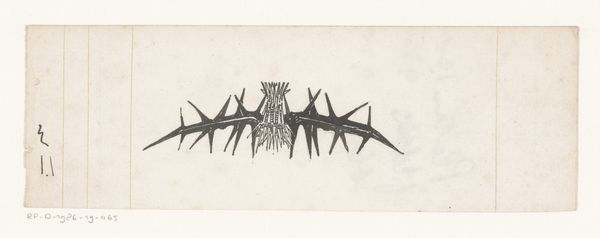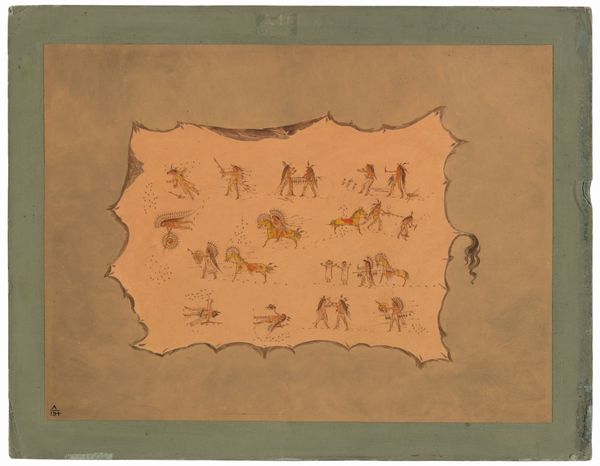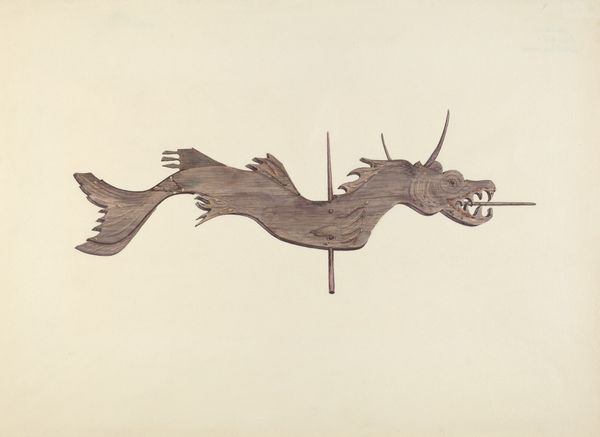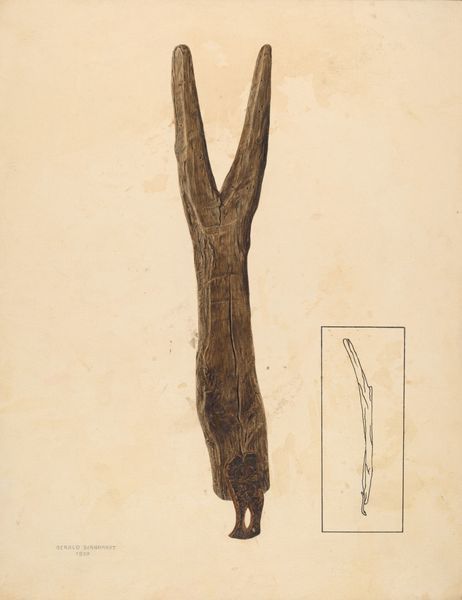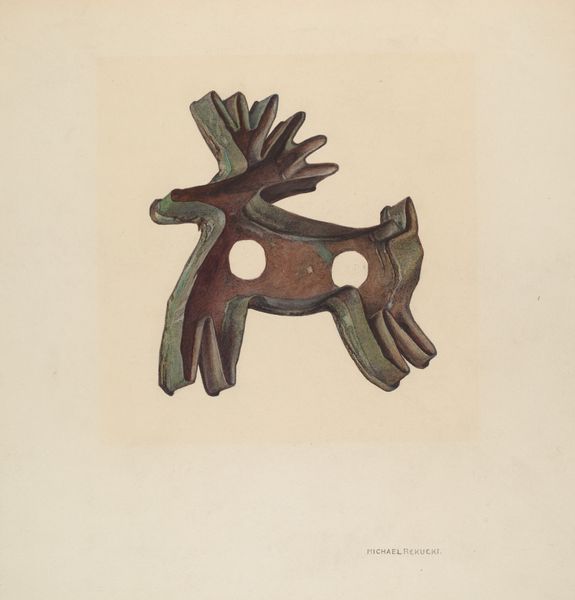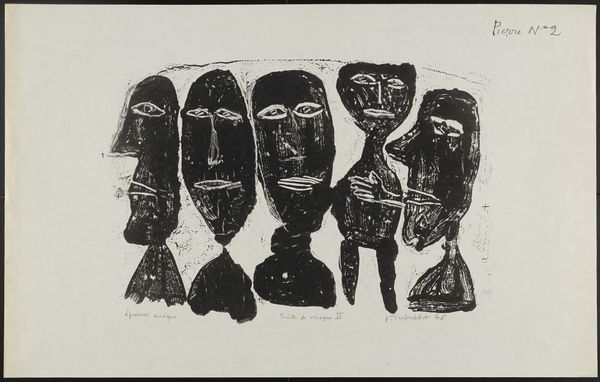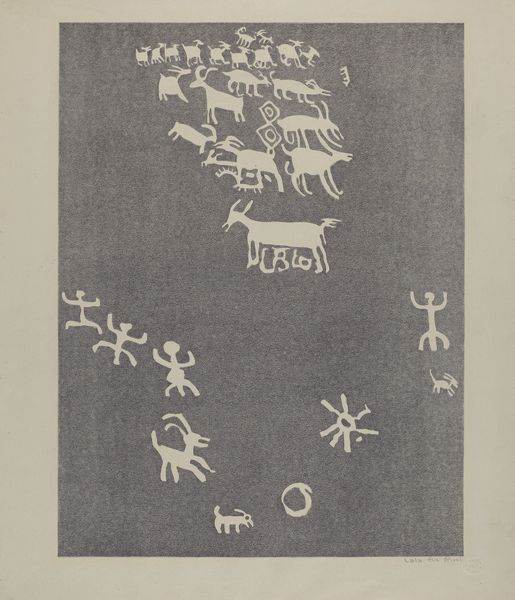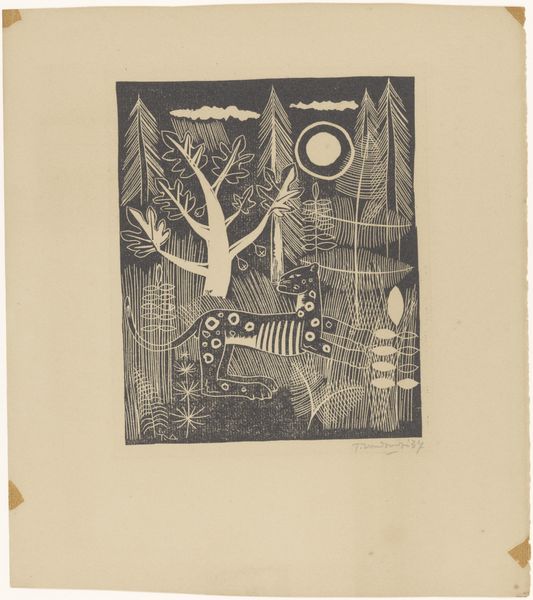
Dimensions: 280 x 350 mm
Copyright: © Marcel Dzama, courtesy of David Zwirner, New York | CC-BY-NC-ND 4.0 DEED, Photo: Tate
Curator: This is an untitled piece by Marcel Dzama, from the Tate Collections. Look at these characters, the composition makes me think of a children's book illustration. Editor: I'm struck by the material of their bodies; are they wood, bark, or something else? It seems deliberately ambiguous. Curator: Dzama's work often grapples with the power of narrative and visual storytelling, embedding elements of folklore and popular culture. This kind of art can subvert traditional art spaces by drawing on more accessible forms. Editor: These figures, whether trees or something else, feel deeply connected to the earth. The ink or watercolor application gives them a sense of age, a history etched into their very forms. Curator: Perhaps that is why there is such a broad audience appeal for his work. Editor: Agreed. Dzama's focus on process and accessibility gives an earthy quality, which allows for a different view of the purpose of art.
Comments
Join the conversation
Join millions of artists and users on Artera today and experience the ultimate creative platform.
tate 3 months ago
⋮
This untitled drawing shows a group of seven human figures wearing costumes that transform them into trees. The lower parts of their legs and feet – clad in what appear to be plus fours and long boots – emerge from the bases of long wooden trunks that extend upwards into clusters of bare branches forking into twigs. Each trunk has a pair of cartoon eyes and a mouth permanently caught in an expressive ‘o’. The figures stand in an approximate row, positioned with a roughly equal distance between them. Drawn in black ink and coloured in brown watercolour paint, they float in the neutral ground provided by the creamy Manila paper on which they are depicted, with no further clues as to the fragment of narrative evoked.
